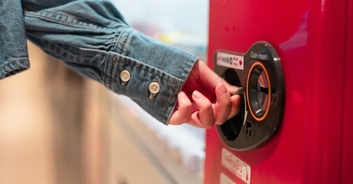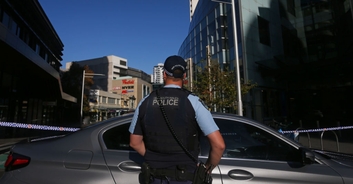Last night, California ordered its almost 40 million residents to stay at home, following in the footsteps of Italy, Denmark, Belgium, Spain, El Salvador, Peru, Malaysia, and France, who are currently in lockdown.
Other governments across the globe are continuing to employ stricter regulations on civil liberties in a bid to curtail the spread of the novel coronavirus, of which there have been 254,798 confirmed cases and 10,448 deaths, at the time of writing, per the World Health Organization.
Measures such as working from home if possible, traveling only when necessary, avoiding places like bars, restaurants, and gyms, and closing schools are known as "social distancing", and are imperative to the situation we find ourselves today as we work to slow down the spread of infection.

Because coronavirus is primarily spread through respiratory droplets - such as when people cough or sneeze - maintaining physical distance from our peers (ideally two meters) helps decrease the spread of disease as we go about our daily lives. Sure, this is inconvenient and oftentimes uncomfortable, but wholly necessary given just how contagious this virus is.
To compare, when you're infected with the flu, it takes around two days before you begin to exhibit symptoms, but COVID-19 symptoms, on the other hand, take an average of five to six days to show, making it easy to spread to those on your commute, colleagues, and loved ones, before you even realize that you're unwell.
This man explains his coronavirus symptoms below:These measures are primarily in place to protect the most vulnerable - the elderly, those with underlying medical problems, including heart disease, neurological problems, and those who are immunocompromised, as well as pregnant women.
If we, at this critical time, do not practice social distancing, we could risk overwhelming hospitals. This would put these vulnerable groups at greater risk of not receiving the medical attention they need, which could ultimately jeopardize their lives. Just take a look at Italy: a study in JAMA this week discovered that almost 40% of infections and 87% of deaths in the country have been in patients over the age of 70.
You may have heard the term "flattening the curve" being bandied about on social media, and it's certainly helpful if want to visualize the impact that social distancing measures could have.
When it comes to the "curve", researchers are speaking about the theoretical number of people who will contract the virus over a particular period of time.

The faster the curve rises, the quicker the health care system goes beyond its capacity to treat those in need. A flatter curve, however, assumes that while the same number of people get infected, they do so over a longer period of time. This slower infection rate means that hospitals and healthcare providers are less stretched, and fewer sick people get turned away.
This is where we come in: with currently no vaccine to treat COVID-19, and with limited testing in the US and UK, the only way we know to flatten the curve is for everyone - healthy or sick, young or old - to limit social interaction as much as possible, and right away. It's now a matter of life or death.












